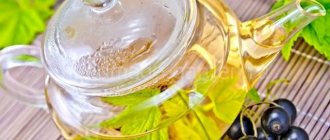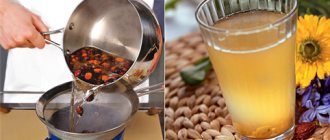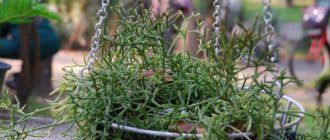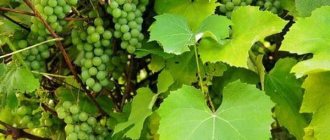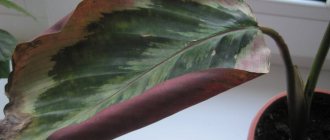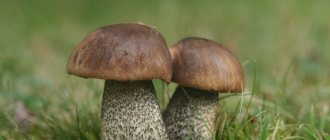Tea made from currant leaves has a subtle note of spring rain, the amazing aroma of summer and the spiritual beauty of autumn. The aftertaste of tea lasts for a long time, and its healing properties fill you with vigor, strengthen your immune system, and warm you up on cold winter evenings. Blackcurrant bushes can be found in almost every summer cottage, but not all gardeners take advantage of the unique opportunity to harvest currant leaves for tea. If you are one of them, we advise you to think twice. After all, with the arrival of autumn, the same vitamins that you buy at pharmacies for huge amounts of money fall down onto the ground. In this article we will tell you when to collect currant leaves for tea, how to do it correctly, and why tea from currant leaves is so useful.
When to collect blackcurrant leaves?
The rules for collecting currant leaves for tea vary depending on the color of the berries of the bush, the climatic conditions of its growth, and the drying method. Black currant leaves are considered the most suitable for collection. The fact is that on the lower surface of blackcurrant leaves there are special glands containing beneficial essential oils. It is to these oils that tea made from blackcurrant leaves owes its magnificent taste and aroma.
What other methods of harvesting leaves are there?
An alternative to the previous options for harvesting currant greens is fermentation. The method is complex and labor-intensive, but effective. More often fireweed is subjected to it, but it is also acceptable for other plants. It is acceptable to prepare currant leaves in this way.
Lay out the sheets on a flat surface, in the shade. It is recommended to spread cotton or linen fabric on the bottom. Then the raw materials will not dry out before the due date and will not absorb anything dangerous.
The first fermentation step takes from 12 to 24 hours. The condition of the foliage will become a guideline: when squeezing, you don’t hear a crunch, which means it’s ready for subsequent actions. If the room is excessively humid or dry, then the tea is wrapped in a piece of cloth. This saves time - drying time is reduced to 6 hours.
After the required period has passed, the wilted raw materials are rolled until the juice is released. The larger the volume, the more aromatic the tea will be in the future. Roll into rolls, 8 sheets each. Then they cut into small pieces. This is how fine-leaf herbal tea is produced by hand.
It is only allowed to mash the workpieces until they are moistened - this will be a large-sheet brew. You can grind it through a meat grinder - this is a granular composition.
Then the preparations are placed in a vessel, covered with a damp cloth and removed for fermentation. The procedure takes 5-9 hours. When a fruity smell appears, they begin drying directly.
During fermentation, external conditions are important:
- The optimal temperature regime is 24-26 °C. If the room is cool, then wrap the bowl with a thick towel or blanket. When it's hot, they look for a cool place. Otherwise, the drink will have an unpleasant smell.
- After fermentation, the leaves are scattered on a baking sheet and placed in an oven heated to 90-100 °C. Keep until completely dry. It is important to grasp this point, since overdried raw materials are less rich in aroma and taste. Readiness is determined by bending the sheet and listening for a crunch to occur.
Transfer the prepared currant tea into canvas bags or glass jars. Store in the dark and cool.
The beneficial composition in currant leaves is completely preserved when frozen. However, not everyone likes the fact that after brewing the leaves are not as fragrant as those prepared by other methods.
To do this, the leaves are first washed under running water and dried on paper towels. Then they chop it into pieces and put it in bags. They are given a flat configuration and placed in the freezer compartment.
When to collect currant leaves for the winter?
The most useful substances are contained in young leaves, so it is recommended to collect them in late spring - early summer. But experts do not recommend relying on the calendar. They are convinced that it is best to collect during the flowering period of the plant. When the plant blooms depends on the climate zone and the weather conditions of a particular year.
In addition, to the question “When should you collect currant leaves?” they will answer with confidence - “In the morning!” It is advisable that the dew on the leaves has already dried, but they have not yet had time to heat up in the sun. It is strictly not recommended to collect currant leaves in rainy weather. When dried, they may become moldy, and all your work will be in vain.
When preparing currant leaves, you should follow simple rules:
- Try to pluck or carefully cut off even, non-blackened leaves located in the upper part of the plant with pruning shears.
- Do not pick (cut) all the leaves from one branch.
- Check leaves for signs of rot or insect damage. Having discovered these, you will not only be able to get rid of low-quality raw materials, but also provide timely help to your garden pet.
- When collecting, try not to damage the plant trunk. This can lead to diseases of the bush and even its death.
You may be interested in: Moroccan mint for making aromatic tea
What are the collection regulations?
It’s easier to go to the garden, pick green currant leaves and brew delicious and fragrant tea. But it definitely won’t be of any use. And to obtain a healing drink, raw materials are collected during the flowering period. This is the stage when the vegetation is fully saturated with valuable components.
The time of day also plays an important role. Herbalists recommend collecting medicinal plants in the morning, approximately from 8 to 11 o'clock and in dry weather. This is the period when the dew has dried and the sun is not yet shining. It is not advisable to take raw foliage, since it cannot be dried properly.
Another point taken into account when collecting raw materials is the cycle of the earth’s satellite. It is recommended to select a period when the Moon is waxing.
Whole leaves are torn off, without damage or external signs of disease or insect damage. The tops of young shoots are suitable. Similar rules apply to collecting leaves of other berry crops.
When to dry currant leaves?
As we have already said, there are many technologies for harvesting currant leaves. We have already decided when we can collect currant leaves. From the first flower until the end of summer, you can brew tea from fresh, just picked leaves, but when to prepare currant leaves for the winter and how to do it correctly?
Let's consider three main options for preparations: fermentation, drying and freezing.
Freezing leaves
Freezing currant leaves for tea is a very simple option for preparing raw materials for owners of large freezers. To prepare the product you need:
- Collect currant leaves, carefully sort them, removing debris and dry pieces of branches.
- Gently rinse the leaves with warm water and lay them on a flat surface until completely dry. For faster results, it is recommended to use paper towels for drying.
- Cut the dried leaves into strips about 1 cm long, put them into portioned bags, tie them tightly and put them in the freezer.
Drying currant leaves
When to collect currant leaves for drying and how to make the raw material suitable for use? It is recommended to collect currant leaves for winter harvesting no later than the end of July.
If harvested later, toxins harmful to the body accumulate in the leaves and the amount of beneficial substances is reduced. It is best to dry the collected leaves in a dry room where there is a flow of fresh air. For example, this could be an attic or a covered veranda. To dry the leaves, they should be laid out on clean sheets and turned over regularly.
You can dry the raw materials much faster using the oven. Please note that the oven temperature should not be higher than 100%. The door should be left open when drying. Monitor the color of the leaves; if they begin to darken, remove them immediately and reduce the temperature.
Modern electric dryers can also be used to dry currant leaves. The “herb drying” mode, which most of these devices are equipped with, can easily cope with the task.
Fermentation of currant leaf
Fermentation, as a method of preparing currant leaves, is perhaps the most labor-intensive process. However, according to experts, the taste of currant tea when using this method of preparation is much richer and more aromatic.
You may be interested in: Senna grass - healing properties of the plant
What is fermentation? This is a special plant processing technology in which the leaf is oxidized, followed by fermentation and drying. When to prepare currant leaves for fermentation? As for drying, currant leaves for fermentation can be harvested from the beginning of flowering. However, experts believe that leaves harvested closer to autumn have greater flavor, although they pose many cooking problems. For example, they do not curl well, and twisting is one of the main stages of fermentation.
Although the fermentation process is more complicated than conventional drying, you are quite capable of mastering it. Let's start:
- To begin, place the collected leaves in the shade. They should soften a little and become elastic. The approximate drying time for raw materials is 12 hours.
- After this, you should take the leaves in your hands, try to twist and roll them, releasing the juice. Cut the resulting rolls into pieces of approximately 1 cm each. You can also chop them with a coarse grater in an electric meat grinder.
- Next, the raw materials are placed in an enamel bowl and left for 5-8 hours to ferment. The optimal temperature for this procedure is about 25 degrees.
- The last stage of fermentation is drying the leaves in the oven.
So, we have learned how to properly prepare currant leaves, but what is all this for?
What rules are followed?
Drying is the second important stage in preparing currant greenberries for the winter. Even correctly collected, but not properly dried, they can go bad. The main thing is to comply with a number of conditions:
- warm;
- absence of dampness and direct sun exposure;
- open space in the fresh air.
They choose a place where it is warm, dry and not hot from the sun. Lay out the collection on a spread clean piece of cloth or paper. It is unacceptable to use newspapers, as the paint contains toxic components. Drying on them will not add any benefit to the leaves.
Throughout the process, the workpieces are periodically stirred so that they do not start to mold. As soon as the sheets acquire a brittle structure, they are sent to a permanent storage warehouse.
Place the resulting raw materials in hermetically sealed containers. Place it where it is dry and cool. You should not keep odorous spices or other products nearby that can imbue currant leaves with unnecessary aromas.
If it is not possible to dry the foliage in the fresh air, use the oven. Only with this method are some of the beneficial properties lost. The leaves are distributed in an even layer on a heat-resistant sheet, then placed in an oven heated to 100 °C. The door is left ajar. After 1.5 hours, the heating is reduced and the raw materials are brought to full condition.
What are the benefits of currant tea?
- Currant leaves are a source of vitamin C, and therefore a powerful assistant in the fight against colds and weakened immunity.
- Tea made from currant leaves has a diuretic effect. Thanks to this property, tea relieves swelling, fights kidney stones, diseases of the spleen and pancreas.
- Currant is a good antihistamine that brings relief from allergic rhinitis and asthma.
- Currant tea has a calming effect and improves memory.
What is included in the chemical composition of currant leaves?
The chemical composition of the leaves does not differ from the fruits. They also have useful substances:
- vitamin C, or ascorbic acid, is a powerful antioxidant;
- terpene alcohol is widely used, especially in cosmetology and pharmacology for the production of natural biological preparations;
- carotene strengthens the immune system and effectively fights infections, has restorative properties;
- phytoncides destroy bacteria and fungi that develop in the human body;
- essential oils cleanse phlegm and other harmful secretions, improve digestion and the entire system as a whole.
It should be noted that currant leaves are more enriched in ascorbic acid than the fruits themselves. Therefore, it is better to brew tea from dried raw materials, especially during the winter period.
How to properly brew tea from currant leaves?
Currant leaf tea can be brewed together with regular tea or separately. It should be understood that freshly brewed tea has the greatest benefits. For brewing, you can use a regular kettle or thermos. The proportions are approximately like this:
- 1 teaspoon tea
- 1 cup of boiling water.
Cooking time is about 10-15 minutes.
Preparing raw materials for drying
Drying is the most popular and easiest way to prepare medicinal raw materials. After the excess liquid evaporates, the shelf life of the plant is extended and the maximum medicinal properties are retained. But for this it is important not only to correctly collect, but also to prepare the leaves.
Currant greens are prepared according to this plan:
- collect raw materials;
- sort and eliminate specimens with defects;
- cleanse from contaminants;
- dried in a suitable manner.
Important: Before drying currant leaves, it is not recommended to wash them. They must be as dry as possible before harvesting.
Currant greens should not be washed before the procedure, as it is highly likely that they will not be able to dry properly. Then drying will take longer, and the shelf life of the raw materials will be reduced. Washing immediately before drying will increase the risk of rotting of the collected sheets.
It’s good if the leaves were wet by rain 2–3 days before drying, and then there were sunny days. Then the plates will dry thoroughly and be clean. Some owners deliberately spray the bushes with a hose or watering can a few days before harvesting to clean them. The main thing is to make sure that it doesn’t rain for 2–3 days. Otherwise, everything will have to be put aside to let the greens dry.
If you collected currant leaves and it turned out that the bushes are dirty, then water procedures cannot be avoided. Then you will have to rinse them or wipe them with a damp cloth, and then dry them using paper towels. But in this case, the risk of raw materials becoming moldy remains.
It is necessary to prepare containers for drying currant greens. This can be a tray, wire rack or baking sheet. These devices also need to be washed, wiped with a towel, and additionally dried in air. Before laying out the raw materials, the container is covered with parchment paper, which will absorb excess moisture.
Contraindications, possible harm
Rarely, but still there are people for whom tea or currant leaf decoction is not recommended or is completely prohibited.
- For inflammation of the digestive tract, ulcers, and acute gastritis, do not use the leaf. When breastfeeding, the dose of the leaf should be limited, as it can provoke the child's allergies.
- Since currants increase blood clotting, they should be taken with caution for thrombophlebitis and varicose veins.
- Also, leaf tea is not recommended in steam rooms, especially for people who are obese, have cardiac problems, or high blood pressure.
- Large doses of teas and decoctions for colds, as a diaphoretic, or for swelling as a diuretic, can lead to dehydration.
- In such cases, you should increase the amount of water you drink. Essential oils from the leaves may cause allergy attacks in sensitive people.
- People may also be intolerant to any component of the plant.
Before deciding to use the healing power of currant leaf, you should be well aware of the contraindications. You should consult your doctor to rule out the possibility of negative reactions.
If there are no prohibitions, then the currant leaf will gladly give up its power to restore the human body, improve mood, and give good health.
